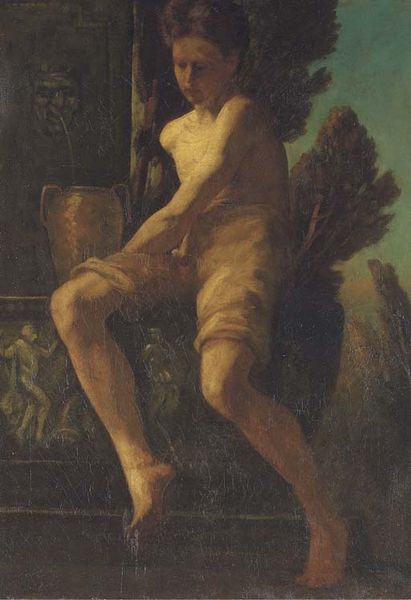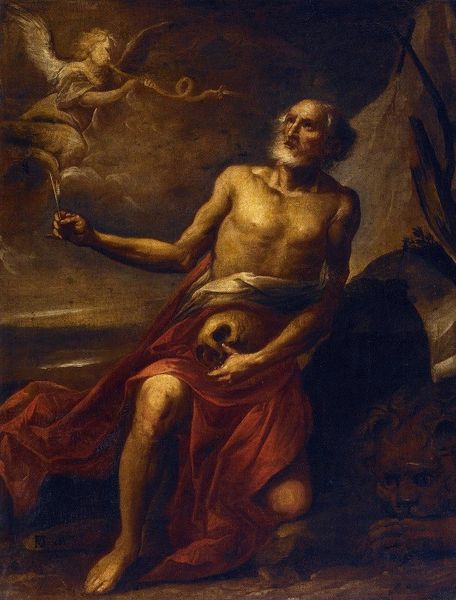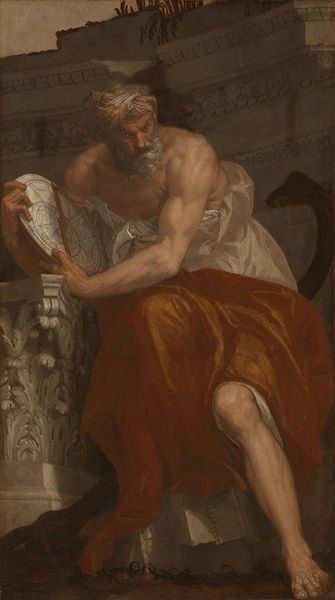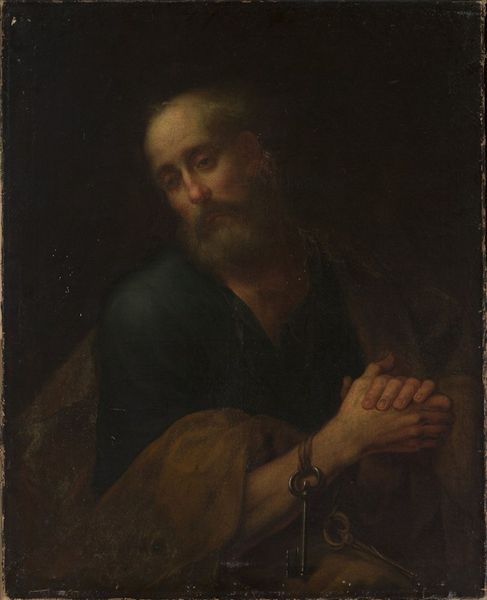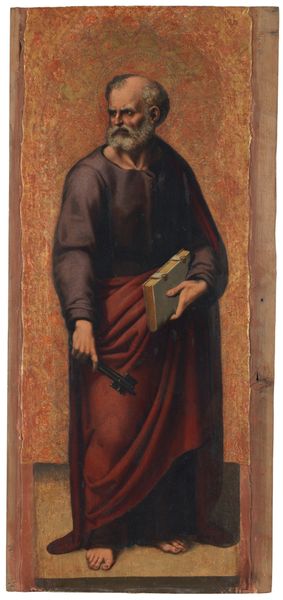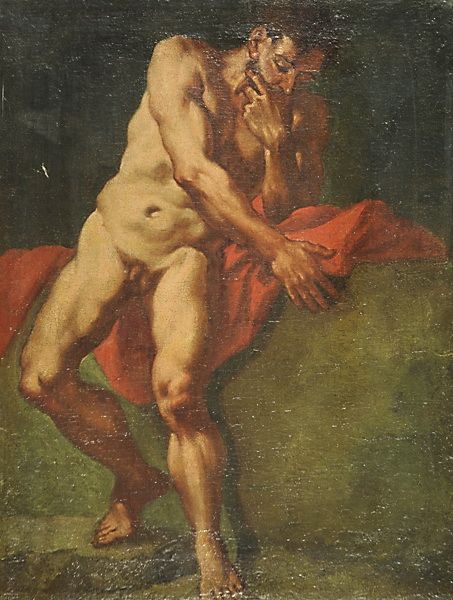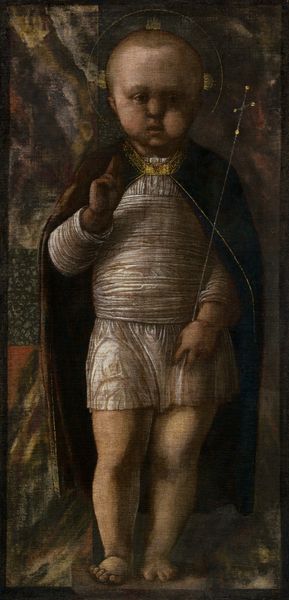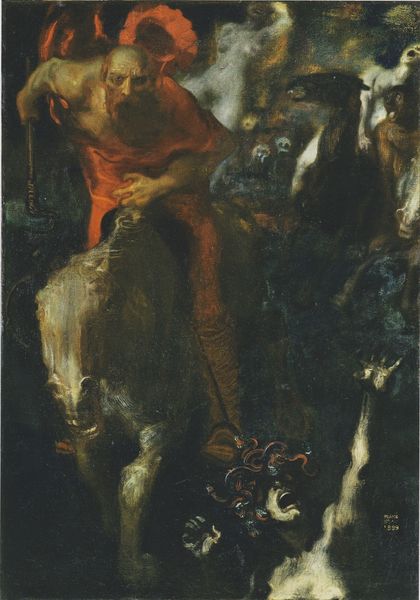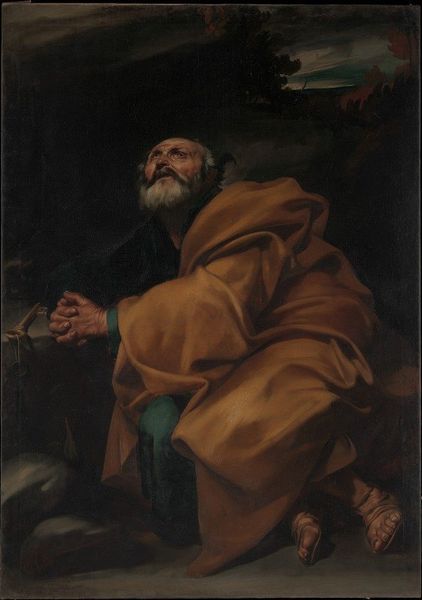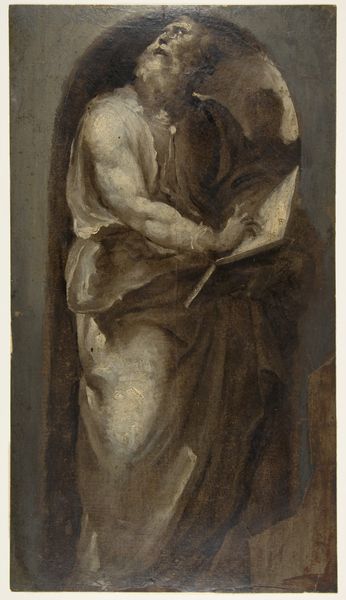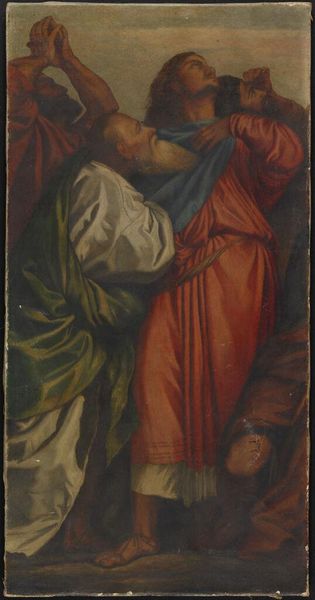
Dimensions: support: 1829 x 1060 mm frame: 2150 x 1384 x 90 mm
Copyright: CC-BY-NC-ND 4.0 DEED, Photo: Tate
Curator: The overwhelming presence of George Frederic Watts's "Mammon," which resides here at the Tate, really makes one pause. Editor: It does. The somber palette and almost grotesque central figure inspire a visceral sense of unease. The human figures seem almost crushed. Curator: Watts painted this work to critique the burgeoning capitalist society of Victorian England. Mammon, of course, is the biblical personification of greed. Notice the skulls positioned above Mammon—icons of death looming over wealth. Editor: So, Watts uses the symbolism of Mammon to represent the destructive consequences of pursuing wealth at the expense of human lives? The sacrifice of individuals for economic gain becomes quite clear. Curator: Precisely. The figures writhe almost sacrificially, and his crown, almost a mockery of power, hints at the hollowness at the heart of materialism. Editor: It's a truly impactful piece. Watts successfully uses familiar iconographies to deliver a powerful social message still relevant today. Curator: Indeed, a stark reminder of the human cost of unchecked ambition.
Comments
Join the conversation
Join millions of artists and users on Artera today and experience the ultimate creative platform.
tate 6 months ago
⋮
‘Mammon’ is a term from the Bible. It refers to riches and the corrupting influence of wealth. Here, Watts personifies Mammon as an ogre-like figure. He is shown sitting on a throne adorned with skulls, moneybags on his lap. Watts reveals Mammon’s ignorance through the ass’s ears on his golden crown. Young, beautiful worshippers are shown lifeless, crushed under his foot. Watts wrote in 1880: ‘Material prosperity has become our real god, but we are surprised to find that the worship of this visible deity does not make us happy.’ This dark subject was particularly commented on when the work was displayed at the 1889 Exposition Universelle, the world fair held in Paris. Gallery label, June 2021

